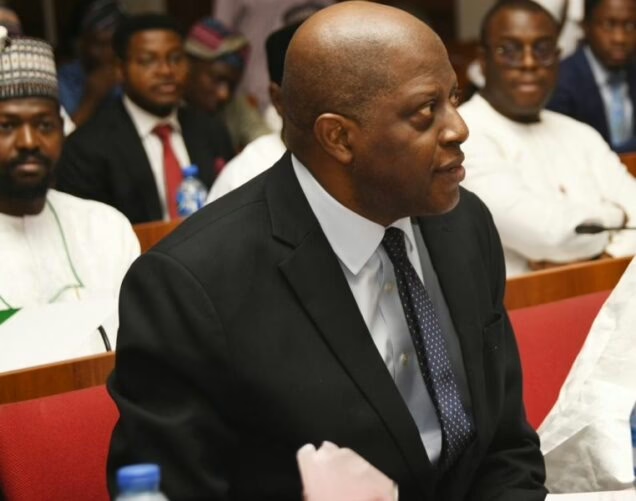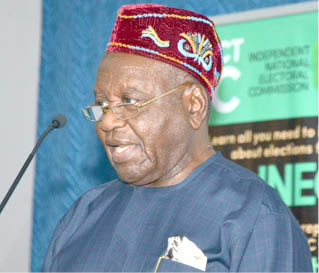However, the agreement at COP is not specific on anything. And it seems no one wants to learn from history. The previous $100 billion goal agreed at COP15 in 2009 expected to be achieved on 2020 could not materialize, such that it has to be restructured at COP21 (in 2015) to 2025. Yet, the $100 billion goal was only achieved on 2022, two years after the initial agreed time of 2020. Given that the current goal at COP29 follows the same pattern as previous one, it is only expected that it will end up the same way. The only difference this time is that the failure of current goal will have serious repercussion on attempt at fighting climate change, especially as the world inches closer to an irreversible turning point, while emission budget is being exhausted.
Fourthly is the market fundamentalist nature of climate financing. As noted in several reports, majority of climate funding come in form of loans and equity. According to OECD (2024), which tracks the $100 billion goal, more than two third (69 percent in 2022) of climate financing from developed countries came in form of loans with grants constituting less than 30 percent. While OECD (2022) notes that most of the loans are for mitigation projects, a certain number of adaptation projects are also funded through loans, rather the grants. It, OECD, justified this on the ground that grants are only meant for projects that have no profit prospect, while loans are meant for profit-spinning projects. Given that majority of the funding have been through loans, it is clear that COP climate funding is premised on the market fundamentalist principle. It means donors favour profit-oriented projects more than grants. This means that projects such as improved sustainable agriculture that will ensure food sufficiency for climate impacted countries and communities will not be grant based, since farmers will make profits from such projects. Yet, these are countries that used to be self-sufficient before climate impact. But the market oriented climate funding will rather make mincemeat of them, by squeezing out profits through interests on loans. Worse still, majority of the grant-funded projects are not actual adaptation projects, but mostly incidental or support projects such as “capacity building, feasibility studies, demonstration projects, technical assistance, and activities with low or no direct financial returns but high social returns” (OECD 2022).
Fifthly is the fact that helping low income, underdeveloped and low middle income countries, transition away from fossil economy into clean energy system is seen within the prism of profit-taking, not an urgent responsibility towards achieving zero emission and systemic decarbonization, which is central to reversing the trend of climate change. More importantly, the developed countries only see opportunity of profit-taking from climate change, not the historic responsibility to stop emissions. Given this background, the developed economies are only interested in deepening current exploitative capitalist arrangement that has kept the underdeveloped economies in perpetual underdevelopment, albeit under the guise of climate funding. Genuine climate funding should include payment for climate debts and compensations for historic and current emissions, as well as release of necessary technology and know-how for climate action and clean energy transition. This cannot be achieved under the current funding arrangement or system promoted by COP or United Nations.
Sixthly, there is the need to also call out industrialized economies, such as China and India, who are not part of developed countries, but also contribute significantly to current global emissions. These countries, especially China and India, who have become major emitters (contributing 33 percent of all global GHG emissions), also need to be committed to not only climate funding and payment for their emissions, but also taken to task on the need to stop emissions immediately. Grouping them alongside poor and third world countries, under the banner of developing countries obfuscate their role in global emissions, and the role they should play in climate funding and actions. For instance, if China and India alone decide to triple their clean energy production, use and deployment, and at the same time reduce their emissions by cutting use of fossil fuels in like measure, they will not only be meeting their climate targets, but also help to shift the balance towards genuine climate solution and clean energy transition globally. This will put pressure on not only developed countries, but also compel major fossil fuel producers shift their economy away from fossil fuel. It will also help to speed up clean energy adoption globally, as the price of clean energy products will fall. In term of climate funding, these industrialized economies in the Global South have capacity to contribute to global climate funding, but have refused to play this role while contributing significantly to global emissions. A country like China has the resources to participate in global climate funding, alongside the developed country.
Advertisement
Seventhly, while the governments of developing countries have the right to protest the paltry offer by developed countries at Baku, the reality is that some of these governments are only shedding crocodile tears. They are conduit pipes to transmit market policies and emission-promoting businesses on their countries and regions, all of which have undermined their economies, while enriching a rich few. Worse still, they are lame at national and regional levels, when it comes to serious climate actions. For instance, Nigeria and South Africa, with their enormous natural resources, can lead the continent in energy transition, by taxing emitters. Given their resources, it is easier for them to diversify their economies from fossil fuel, and help Africa develop a continental clean energy economy and master plan. But these are countries that are increasing fossil fuel production. While Nigeria promotes the idea that natural gas is a transition fuel, South Africa is glued to coal production and use. Morocco, with its huge solar and wind energy power that can be benefit energy-deficient Africa, exports solar electricity to Europe.
In conclusion, while the Baku agreement on climate funding is more of a failure of global climate decision making system, the reality is that the whole climate funding and financing structure is fundamentally faulty, fraudulent and neo-colonial in nature. While climate activists and organizations must continue to push for better funding deal, there is the more urgent needs to campaign for a just, genuine, democratic and sustainable climate funding structure and system that promote development and serious climate actions and solutions.
*Concluded
*Ibrahim, author and global affairs policy analyst, is a climate justice researcher and activist (kmarx4life@ gmail.com; +234 8059399178)











